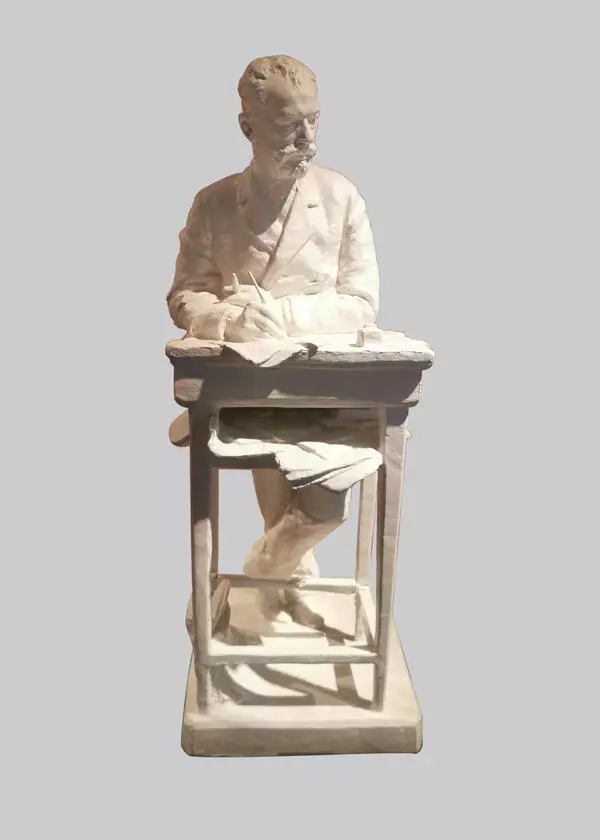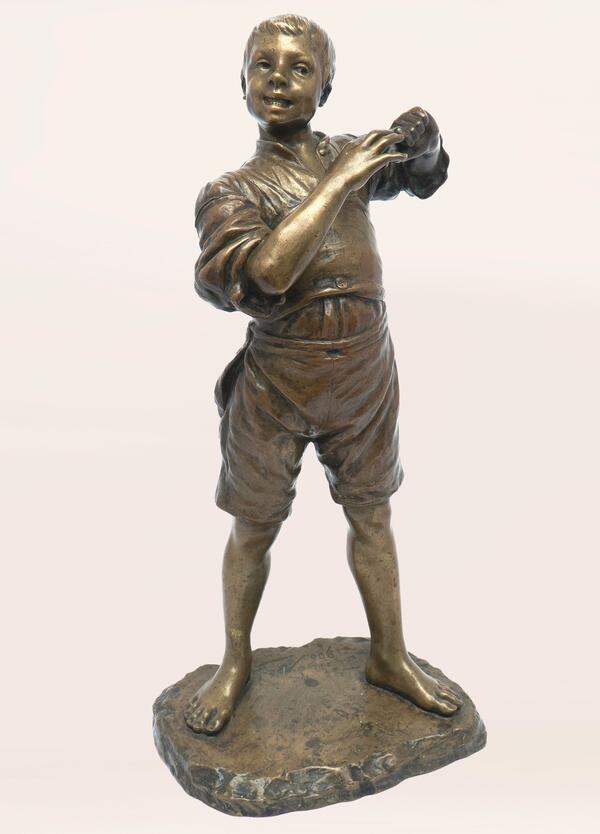A sculptor and academician of the Imperial Academy of Arts, Ilya Yakovlevich Ginzburg (1859–1939) was born in Grodno. In his youth, the sculptor Mark Matveyevich Antokolsky noticed the boy and took him to his workshop for training. Ginzburg’s creative method developed under the significant influence of Antokolsky. It was distinguished by the accuracy of observations and thorough interpretation of details.
In 1878, Ginzburg entered the Sculpture Department of the St. Petersburg Academy of Arts, while also attending the Drawing School of the Society for the Encouragement of the Arts. In the winter of 1880–1881, the future academician studied in the Paris workshop of Antokolsky. In 1886, for his work “Prophet Jeremiah Lamenting the Ruins of Jerusalem”, Ginzburg received a small gold medal and the title of a class artist of the first degree. Further, at the expense of Baron Horace Osipovich Ginzburg, one of the richest people of the Russian Empire and the head of the financial dynasty, who had also paid for Antokolsky’s training, Ilya went on an internship to Europe, visiting Paris and Rome.
In 1900, Ilya Ginzburg received a gold medal at the World Exhibition in Paris, in 1904 — at the World Exhibition in St. Louis. On the advice of the music critic and art historian Vladimir Stasov, Ginzburg developed a specific form of plastic arts — a type of portrait statuettes: he portrayed prominent representatives of cultural and artistic spheres, depicting them at work.
In general, the portrait genre was the sculptor’s main area of work. In addition to portrait statuettes, Ginzburg created numerous busts of representatives of the artistic intelligentsia: he portrayed Ivan Nikolaevich Kramskoi, Dmitry Vasilyevich Grigorovich, Vladimir Sergeyevich Solovyov and others. The bust of Ivan Dmitrievich Sytin presented in the museum was made in the 1900s and was displayed in the editorial office of “The Russian Word”.
“The Russian Word” repeatedly
published stories and reviews by Ginzburg, who was also fond of literature. In
1908, a book of Ginzburg’s memoirs was published under the general title “From
My Life”. After the revolution of 1917, Ilya Ginzburg managed the sculpture
workshop of the Petrograd Free State Artistic Studios. Later he became dean of
the Department of Sculpture of Higher Art and Technical Studios. He created
monuments to Nikolai Gogol (Sorochintsy), Ivan Aivazovsky (Feodosia), Alexander
Pushkin (Yekaterinoslav, now Dnipro), as well as the tombstone of Vladimir
Stasov (Museum of Urban Sculpture, St. Petersburg).





